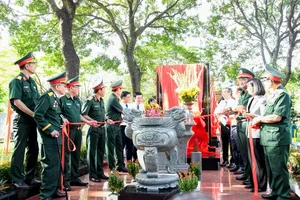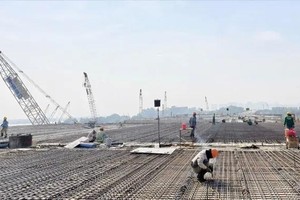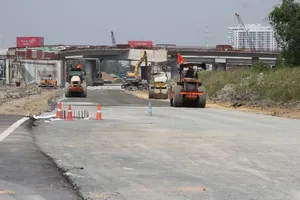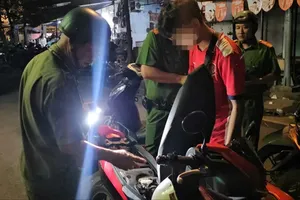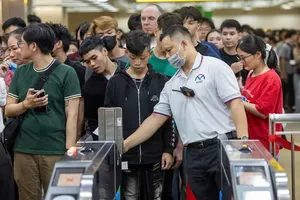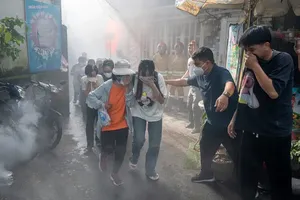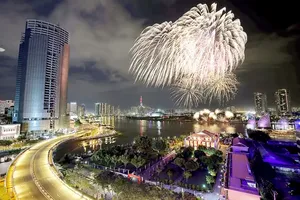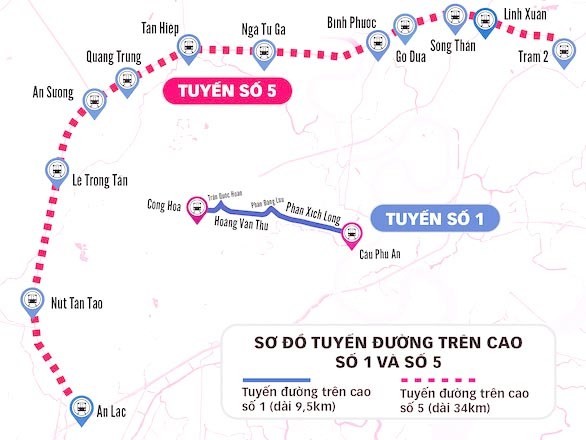
Traffic gridlock often occurs during rush hour on Truong Son street leading to Tan Son Nhat International Airport and the Lang Cha Ca roundabout in Tan Binh district, and at an area at a railroad crossing on Nguyen Van Troi street in Phu Nhuan.
Flyovers have been built around these areas, but congestion has only slightly decreased.
Under the department’s proposal, the projects would cost about VND81.8 trillion (US$3.5 billion) sourced from the State budget and VND68.6 trillion ($2.95 billion ) under public-private partnerships (PPP).
The first priority would be given to construction of two overhead roads No. 1 in and No. 5, to be implemented in the 2020-30 period.
With a cost of VND17.5 trillion ($755 million ) sourced from the local budget, the overhead road No.1 would be 9.5km long, starting from Lang Cha Ca Roundabout in Tan Binh district to the Phú An bridge in Binh Thanh district.
The overhead road No. 5 will run from the National Highway 1A section at Tram 2 Intersection in District 9 and Thu Duc district to An Lac Intersection in Binh Tan district, with a total length of 34km.
The 32.9 trillion VND (1.4 billion USD) project will receive funds under a public-private partnership (PPP). It is expected to reduce traffic jams and enhance transport connections between eastern and western areas.
The department has also proposed three other overhead roads.
The 12km overhead road No. 2 will start at the overhead road No. 1 at the Lang Cha Ca Roundabout and end at the intersection of Huong Lo 2 street and National Highway 1A in Binh Tan district.
The overhead road No. 3 will have a length of 8km from the intersection of the overhead road No. 2 and Thanh Thai street in District 10, running through Ly Thai To and Nguyen Van Cu streets to Nguyen Van Linh street in District 7.
The overhead road No. 4 will be about 7.3km long, running from the intersection of National Highway 1A and the overhead road No. 5, through Vuon Lai street, spanning Vam Thuat river, and Phan Chu Trinh street, and ending at the intersection of Dien Bien Phu street and the overhead road No. 1.
If these routes were expanded, the costs for site compensation would be too high. Therefore, building overhead roads will be more practical and feasible.
Ha Ngoc Truong, vice chairman of the city's Road, Bridge and Port Association, said building the proposed overhead roads was urgently needed to tackle traffic jams in key areas in the city.
The city should create favourable conditions for the private sector to invest in the overhead roads under PPPs, he said.
Vo Kim Cuong, former deputy chief architect of the city, said the city’s development of transport infrastructure had not caught up with its urbanisation and strong economic and population growth.
Upgrading transport infrastructure requires huge financial resources, so the city needed policies to speed up compensation and site clearance to start construction and complete the traffic projects on schedule.

